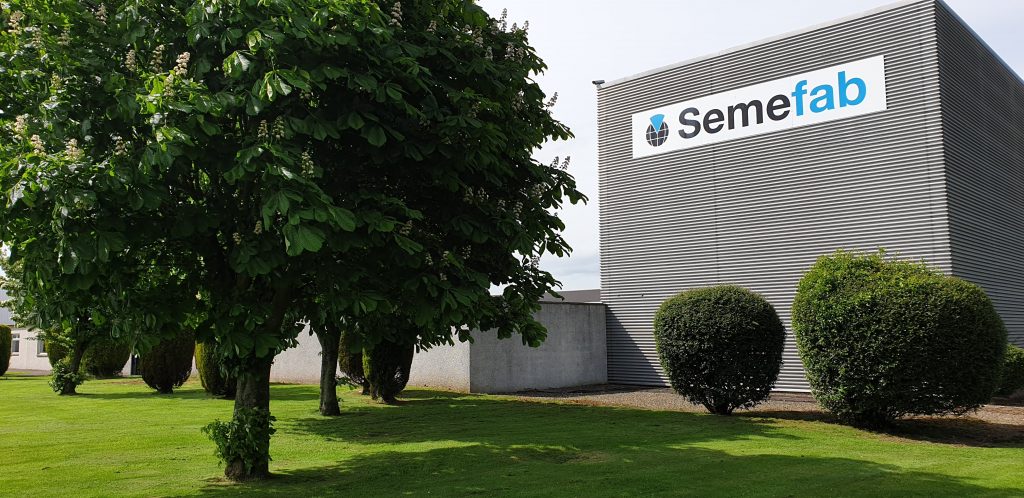
To describe Northern California’s technology sector, most are familiar with the term ‘Silicon Valley’. But in Scotland, the electronics manufacturing phenomenon went by the name of Silicon Glen.
1940s
The rise of Silicon Glen started in 1943 when Ferranti, an electrical engineering and equipment firm, moved from Manchester to Edinburgh.
It was one of the first tech companies to relocate or start up in Scotland during the mid-to-late 1940s. Some speculate that it was due to the decrease in heavy industry jobs during this time, such as shipbuilding.
With people being out of jobs in these industries, due to the second world war, there was an available workforce who would simply need to be retrained.
More companies began to move to Scotland, including larger US companies such as Honeywell and NCR Corporation.
In the early years of Silicon Glen, Scotland was mainly accommodating other tech companies that were moving from foreign countries rather than establishing our own research and development.
1950s
In 1953, IBM (International Business Machines Corporation) opened a manufacturing facility in Greenock.
Silicon Glen was starting to grow, but it wasn’t a booming industry quite yet.
The 50s were slow with only a few companies moving to Scotland and internal companies still hadn’t begun to establish themselves.
1960s
Hughes Aircraft (now known as Raytheon) opened their first facility in Glenrothes in 1960 producing germanium and silicon diodes. Silicon Glen had a lot of influence in the semiconductor design and manufacturing industry.
5 years later, Elliot Automation also opened a production facility in Glenrothes adding a MOS (metal-oxide-silicon transistor, alternatively known as the metal-oxide-semiconductor field-effect transistor) research laboratory in 1967.
Continuing the semiconductor trend, National Semiconductor opened in Greenock in 1969. Motorola followed soon after with a new plant in East Kilbride.
1970s
In 1970, an American company called Compugraphic relocated to Glenrothes, they specialised in typesetting systems, phototypesetting and photomask manufacturing.
Another Glenrothes resident during this time was Micronas – another semiconductor manufacturer – who specialised in automotive sensors.
The peak
Electronics ascended from 1975 to 1990, Silicon Glen was at it’s peak.
Scotland was seen as the European center for electronics with 35% of the continent’s PCs manufactured here. 4/10 of our manufacturing exports were electronics.
As well as PCs, almost two thirds of European cash machines were made in Dundee at NCR.
The silicon chip manufacturer Semefab, located accross the road from us here at Itek House, was founded in 1986.
In the mid 90s, an estimated 55,000 people were employed in electronic manufacturing.
The Scotland-based manager of Cadence Design Systems in the 90s – a hi-tech company from California – was Colin Adams, he said this about the technology sector:
“In the mid 90s there was a general buzz that silicon was good and that Scotland was a good place to do something.
“We managed to convince Cadence that Scotland would be the best choice to build the new design facility, so that went quite well.
“As with many industries in Scotland, we are only 5 million people, we are not going to be growing many multinational companies, but what we did have was talent, a good education system and a good quality of life to offer and that’s what we built it on.”
The decline
Companies began to realise how much cheaper manufacturing costs and labour was offshore.
The first significant dent was in 1993 when Silicon Glen was still seen as being in it’s prime.
An Irvine disk-drive plant closed down losing 320 jobs, then Timex in Dundee followed with a loss of 350 jobs. Later that year Marconi cut 225 jobs during downscaling.
It was at this point that some started to worry. Scotland depended on branch-factory operations and companies were starting to move offshore instead.
A report from the US consultancy Monitor estimated that Scotland could lose up to 18,000 electronics jobs due to the transfer to low-cost production sites at this time.
This didn’t affect Silicon Glen too much, as other companies continued to thrive. Mitsubishi were announcing plans for a £12 million factory to be built in Livingston and preexisting companies based here were planning to upscale.
It was the early 2000s that signaled the downturn.
Beginning in 2001, in only 18 months there were 10,000 net job losses in the technology sector. In total, between 1998 and 2006, an estimated 20,000 jobs were lost – an alarming plunge given the previous success of the sector.
Today
The term ‘Silicon Glen’ is no longer prevalent, but Scotland’s technology and digital sector is still strong.
In Edinburgh, tech roles account for an impressive 23 percent of the workforce.
Edinburgh is home to Rockstar North, a video game company known for its Grand Theft Auto series, and Scotland still hosts branches of many large tech companies.
Silicon Glen focused on manufacturing i.e. ‘screwdriver jobs’. Today, software development – be it apps, video games, AI, digital health – dominates the Scottish technology landscape.
Scotland is at the forefront of today’s digital world and continues to develop and grow to accommodate our tech needs.
There are 11,200 tech companies in Scotland which contributes £6.5 billion to our economy.
Computing qualifications are still popular in schools and colleges and our youth are continue to show interest and passion in the digital workforce.
Silicon Glen is now consigned to history, but that is due to the world changing and companies finding ways to spend less by moving offshore.
Our digital and technology sector is thriving. There are plenty of jobs and it’s a large contributor to our economy.
Glenrothes played a significant role in Silicon Glen and it remains a vibrant place to work no matter the sector.
We are proud to call Glenrothes our home. Click HERE to find out what Itek House has to offer.
LATEST: New space is now available at Itek House, click HERE to read about this fantastic new opportunity.